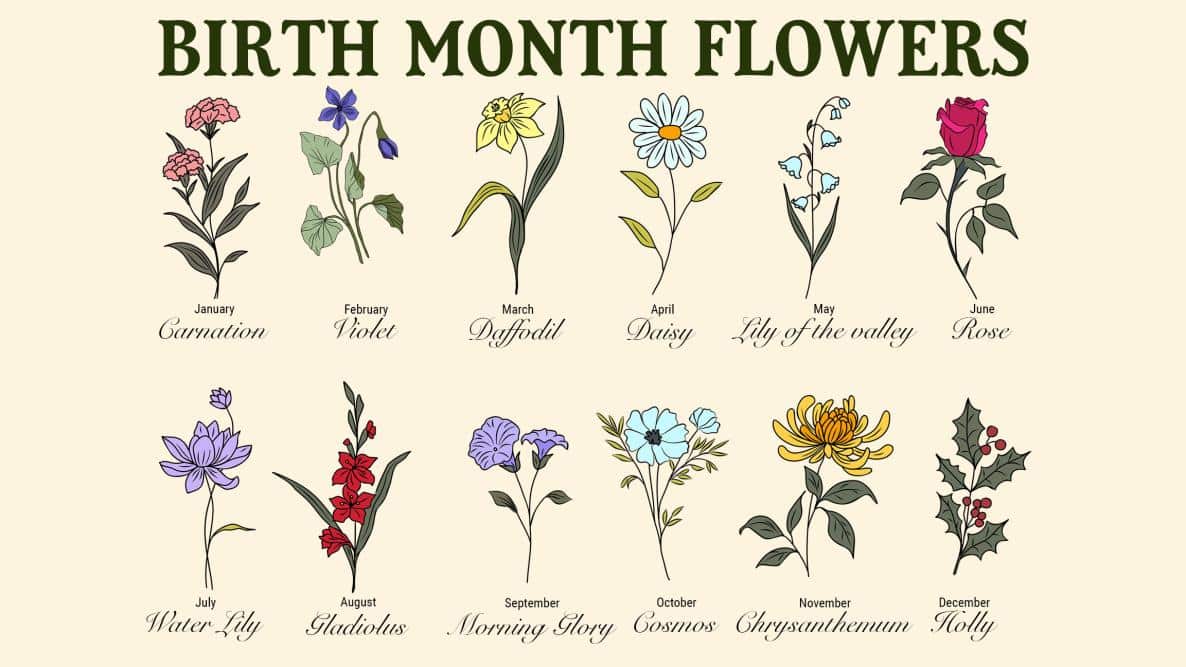Discover the Magic of Birth Flowers: A Parent’s Guide to Blooming Traditions
Welcome, amazing parents! There’s something truly enchanting about the natural world, especially when it intersects with the special moments in our lives. Birth flowers are a delightful way to celebrate the month your child was born, by adding a touch of floral charm and significance to their special days. Let’s embark on this blossoming journey together to explore the unique flowers representing each month and their meanings, creating memorable traditions for your family. ?
What Are Birth Flowers?
Just like gemstones, every month of the year has its own special birth flower. These blooms not only add a dash of vibrant color to our lives but also carry rich histories, cultural significance, and hidden messages within their petals. Understanding the essence of birth flowers can help you cultivate wonderful traditions for your family and provide a deeper connection to nature for your little ones.
The Blossoming Bond: Birth Flowers and Your Child
Introducing your children to the concept of birth flowers is not only educational but also incredibly fun! It provides a fantastical element to their understanding of nature and adds an extra layer of personalization to birthdays, milestones, and memories. Whether it’s planting a birth flower in your garden or gifting a birth flower bouquet, the possibilities are endless for how you can weave this magical tradition into your family’s life.
January: Snowdrop & Carnation
The year begins with a beautiful symbol of hope, the snowdrop, along with the venerable carnation. Snowdrops (Galanthus) emerge even in the coldest winter, signifying resilience and new beginnings, while carnations come in a variety of colors, each with its own message – for instance, pink for affection and white for pure love. Consider crafting a birth flower-themed DIY project with your child to showcase the beauty of January’s blooms!
February: Violet & Primrose
Violets (Viola) represent loyalty, faithfulness, and wisdom, making them a lovely flower to introduce to your child. They’re associated with tales of antiquity and Valentine’s Day. Primroses signify young love and the feeling of not being able to live without a loved one, which resonates with the deep bond between a parent and child. Share a story or fairy tale about violets and primroses with your kiddo – it’s a great bedtime ritual!
March: Daffodil
Daffodils (Narcissus) are sunshine in bloom, signifying rebirth and new beginnings – perfect for celebrating a March baby’s optimism and inner light. Planting daffodils together can become a yearly tradition, reminding your child about the growth and renewal each birthday brings.
April: Daisy & Sweet Pea
April showers bring forth the cheerful daisy and sweet pea. Daisies (Bellis perennis) represent innocence and purity, while sweet peas (Lathyrus odoratus) signify gratitude and pleasure – wonderful sentiments for young and growing minds. Why not make a flower crown or plant some sweet peas to instill a sense of wonder and thankfulness?
As we continue, remember that each birth flower carries its own story, waiting to be a part of your family’s narrative. Joyful parents, helping your children understand and celebrate their birth flowers is more than just an annual event—it’s a nurturing experience that plants the seeds of appreciation for nature’s rich tapestry.
Embrace the whimsy and significance of birth flowers, and watch as the knowledge and love for these botanical beauties flourish in your child’s heart. In our next section, we’ll delve into the birth flowers of the remaining months, so stay tuned for more floral adventures and ideas on incorporating these symbols into your family’s life! ?
Birth flowers have the enchanting capacity to connect us with nature and our loved ones, making every celebration truly unforgettable. With each bloom representing different traits and stories, you’re just at the beginning of weaving your unique family tale with the endearing language of flowers.

5 Things Parents Should Know When Preparing for Birth Flower Celebrations
1. Understanding Birth Flower Significance
Before you embark on incorporating birth flowers into your celebrations, it’s essential to learn about their meanings and histories. Each month’s flower has a unique significance that can add a special layer to your tradition. For example, the June birth flower, the rose, symbolizes love and beauty, while August’s gladiolus stands for strength and integrity. By understanding these meanings, you can personalize your celebrations and create deeper connections with your children.
2. Planning Birth Flower Activities
Brainstorm creative ways to celebrate with birth flowers. If your child is artistic, drawing or painting their birth flower can be a fantastic way to channel their creativity. For the little gardeners, planting the birth flower in your garden or a pot for the windowsill makes for a hands-on and educational activity that teaches patience and care. Activities like these not only celebrate the birth month but also nurture your child’s growth and development.
3. Choosing the Right Birth Flower Varieties
Some birth flowers come in different varieties with varying care needs. For example, lilies represent July, and within the lily family, there are many subtypes, each with unique characteristics. Research the best variety for your living situation, whether you have a large backyard or a small indoor space. This ensures that your birth flower activity is not only successful but also sustainable.
4. Preserving Birth Flower Memories
It’s lovely to create lasting memories with these traditions. Consider putting together a scrapbook that includes photos of your child with their birth flower, pressed flowers from each birthday, and any artwork or crafts they created. This becomes a cherished keepsake that celebrates each year of their life in a beautiful, botanical way, allowing you to look back on these memories fondly as they grow up.
5. Sharing the Birth Flower Tradition
Traditions are even more special when shared. Involve extended family and friends by having them contribute to the birth flower celebration. They can give cards with the flower’s image, or even participate in the planting and maintenance of the garden. This can help children understand and appreciate the community and connections they are a part of, and it expands the joy that comes with each yearly celebration.
Birth flowers offer a heartwarming avenue for parents to bond with their children and instill a sense of heritage and continuity. The process of planning for and celebrating with birth flowers can provide education, foster creativity, and nurture family bonds. By considering the birth flower’s significance, planning age-appropriate activities, choosing suitable flower varieties, preserving memories, and involving your community, you’re on your way to developing a tradition that will bloom for years to come. ?
See more great Things to Do with Kids in New Zealand here. For more information see here
Disclaimer
The articles available via our website provide general information only and we strongly urge readers to exercise caution and conduct their own thorough research and fact-checking. The information presented should not be taken as absolute truth, and, to the maximum extent permitted by law, we will not be held liable for any inaccuracies or errors in the content. It is essential for individuals to independently verify and validate the information before making any decisions or taking any actions based on the articles.




